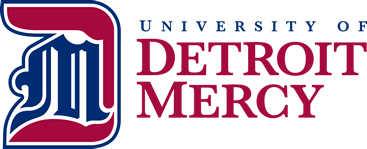Ìý

The Wall Street Journal/College Pulse ranks Detroit Mercy among top universities nationally

The Wall Street Journal/College Pulse ranks Áù¾ÅÉ«Ìà among the top institutions of higher education in the United States for 2024, according to results released Sept. 6.
This year, Áù¾ÅÉ«Ìà was ranked No. 52, making it:
- Michigan’s second highest-ranking university on the list.
- Fourth among Catholic institutions nationally, behind only Georgetown University, Boston College and University of Notre Dame.
- The third-highest ranked Jesuit university and only Mercy institution ranked.
- 41 out of 196 private universities included in the rankings.
“This is a tremendous honor not just for our University, but for our students and alumni who do great work on our campuses, in their field and communities,” said Áù¾ÅÉ«Ìà President Donald B. Taylor. “It is truly gratifying to be recognized for the determination and commitment of our faculty, staff and entire University family in working to help our students and community achieve success.”
Áù¾ÅÉ«Ìà also ranked well in the three categories that make up the ranking:
- 48 in social mobility, which rewards universities with the highest proportion of students coming from lower-income families and maintain high graduation rates. It weighs in favor of schools that have a positive impact on the salaries of graduates, and that keep the costs of attending low.
- 65 in salary impact, which lists schools in order of their impact on graduates’ salaries in relation to the cost of attending.
- 137 for student experience, based on a survey of more than 60,000 college students.
 These new rankings come at a pivotal time for Áù¾ÅÉ«ÌÃ. Each year, Detroit Mercy invests in resources to improve the student experience at the undergraduate, graduate and professional levels. For example, this past summer the College of Health Professions on the McNichols Campus opened the new Simulation, Technology and Research (STAR) Center, which represents the future of healthcare education. This center promotes student-faculty collaboration in one space, enhances curriculum flexibility and provides technological simulation resources and scenarios to help students understand the different ways of treating patients.
These new rankings come at a pivotal time for Áù¾ÅÉ«ÌÃ. Each year, Detroit Mercy invests in resources to improve the student experience at the undergraduate, graduate and professional levels. For example, this past summer the College of Health Professions on the McNichols Campus opened the new Simulation, Technology and Research (STAR) Center, which represents the future of healthcare education. This center promotes student-faculty collaboration in one space, enhances curriculum flexibility and provides technological simulation resources and scenarios to help students understand the different ways of treating patients.
This is one reason why high-achieving students enroll at the institution. This fall, Áù¾ÅÉ«Ìà welcomed 558 freshmen, the largest incoming class on the McNichols Campus in more than 14 years. Of this number, 260 will be the first in their family to earn a bachelor’s degree and 191 will be the first in their family to attend college. And these students are smart: 18 students graduated from their high schools as valedictorians and salutatorians, and the average GPA for this year’s class was 3.65 on a weighted 4.0 scale.
Starting with new enrollment in Fall 2023, students who attended a Catholic school from grades 1-12 are eligible to receive $2,000 a year toward tuition through Detroit Mercy's Catholic Education University Grant. Students who attended and graduated from a Catholic high school (grades 9-12 only) are eligible to receive $1,000 a year. This grant is available each year for a total of four years of full-time undergraduate tuition.
“It is critically important to offer everyone an opportunity to achieve their degree,” Taylor said. “We are humbled that so many students, and especially first-generation students, have entrusted us with their education at the college level.”
The WSJ first published rankings in partnership with Times Higher Education in 2016 and ended them in 2022. The new rankings were developed with data scientists at Statista through a revamped methodology.
Unlike the previous college rankings, the new WSJ/College Pulse rankings weigh student outcomes more heavily. This includes a greater emphasis on measuring the value added by colleges by focusing on the college’s contribution to that success.
College scores in the WSJ/College Pulse ranking are based on three factors: student outcomes, accounting for 70% of the rankings; the learning environment at 20%; and diversity, at 10%. The ranking is also constructed by applying rigorous statistical analysis to official government data, combined with responses from one of the largest independent surveys of verified students ever conducted in the United States. In addition to the analysis of graduation rates and graduate salaries outlined above, they factored in the cost of attendance against salary performance when considering student outcomes.
“We no longer reward colleges’ wealth or reputation in and of themselves,” writes the Journal’s Harry Carr in a story accompanying the rankings. “Gone are the rewards for instructional spending and the assumption that the quality of education is largely dictated by how expensive it is to produce.”
Carr continues: “We put greater emphasis on measuring the value added by colleges — not simply measuring their students’ success but focusing on the contribution the college makes to that success.”
To learn more about the 2024 WSJ/College Pulse rankings, please visit .